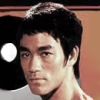Teruo Nakamura
 Nakamura had grown up in Formosa (Taiwan) then a Japanese possession that had been seized from China at the conclusion of the Sino-Japanese War of 1894-95. Born in 1923, he was a member of the indigenous aboriginal peoples who by then comprised only a small minority of the islands population. His real name, it appears, was Attun Palalin, but he adopted a Japanese one when he was conscripted (or volunteered; there seems to be no consensus here) and joined the war effort in 1943. After completing basic training, he was sent with his unit to the Indonesian island of Morotai a few months before it was attacked by the advancing Americans.
Nakamura had grown up in Formosa (Taiwan) then a Japanese possession that had been seized from China at the conclusion of the Sino-Japanese War of 1894-95. Born in 1923, he was a member of the indigenous aboriginal peoples who by then comprised only a small minority of the islands population. His real name, it appears, was Attun Palalin, but he adopted a Japanese one when he was conscripted (or volunteered; there seems to be no consensus here) and joined the war effort in 1943. After completing basic training, he was sent with his unit to the Indonesian island of Morotai a few months before it was attacked by the advancing Americans.Nakamura, then, was not Japanese, and he and his comrades occupied at best marginal position in the Imperial Armys order of battle. One of his motives for joining up in the first place to fight in a war that only about 8,500 Taiwanese took a direct part in may have been to elevate his status; indigenous men who joined the Imperial forces ranked above the local Chinese in the eyes of the islands administrators. But it was a decision that also placed him in a position of considerable danger. Taiwans special volunteer soldiers were earmarked by their Japanese superiors to spearhead dangerous missions, and expended as cannon fodder in some of the bloodiest battles of the war. As Trefalt points out, Nakamuras very survival thus inescapably brought into the public sphere the legacies of Japanese imperialism.
General Douglas MacArthur arrives on Morotai. The island witnessed fierce fighting after the American landings in September 1944.
The wartime choices forced on Nakamuras unit were similar to those made by many other IJA troops confronting Allied landings on small islands. Forced to make the best of limited supplies, faced by overwhelming numbers, and lacking proper air support, they either sacrificed themselves in hopeless attempts at defence, or retreated into the interior. Morotai an island of about 700 square miles, five times the size of Onodas Lubang was large enough to make the latter option a realistic one, and Nakamura was fortunate that his unit was ordered to disperse and commence a guerilla campaign soon after the invasion happened. By the time the war actually ended, 11 months later, he was part of a dwindling group of soldiers that seems to have repeatedly dispersed and coalesced, breaking into ever smaller parties to hunt for food deep in the jungle, and regularly losing members to starvation and disease. According to the survivors of one of these small parties nine men who were discovered and repatriated in 1956 Nakamura possessed a high degree of self-sufficiency. He went off to live on his own in the jungle between 1946 and 1947, returned to the main group in 1950, and then disappeared again a few years later when he went to investigate a small island they had not noticed before.


